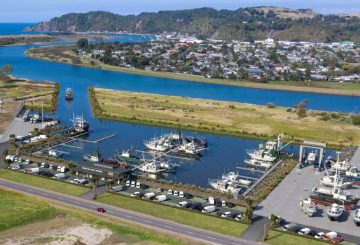Công việc kết hợp, liên quan đến việc phân chia thời gian giữa văn phòng và nhà, đã trở thành lựa chọn ưa thích trong thế giới hậu đại dịch. Nhưng các cặp vợ chồng ở New Zealand quản lý phong cách làm việc mới này như thế nào?
Các nhà nghiên cứu từ Đại học Auckland và Đại học Massey, Tiến sĩ Joanne Mutter và Phó Giáo sư Kaye Thorn, đã nghiên cứu cách các cặp vợ chồng chuyên nghiệp xử lý sự cân bằng này. Họ đặc biệt quan tâm đến việc tìm cách làm việc tại nhà dễ dàng hơn cho các cặp vợ chồng.
Nghiên cứu của họ cho thấy mọi người thường rơi vào hai loại khi nói đến sự cân bằng giữa công việc và cuộc sống. Một số người, được gọi là “nhà tích hợp”, cảm thấy thoải mái khi kết hợp công việc và cuộc sống cá nhân của họ, chẳng hạn như trả lời email công việc vào ban đêm và làm việc vặt vào ban ngày. Những người khác, được gọi là “người tách biệt”, thích giữ cho công việc và cuộc sống cá nhân của họ hoàn toàn tách biệt, gắn bó với giờ làm việc cụ thể và tránh các nhiệm vụ liên quan đến công việc ngoài những giờ này.
Hiểu được đối tác của bạn thuộc loại nào có thể giúp quản lý tình hình tốt hơn. Ví dụ, nếu một đối tác là người tách biệt và người kia là người tích hợp, điều đó có thể dẫn đến những thói quen không lành mạnh, giống như cả hai đối tác làm việc đến khuya.
Nghiên cứu cũng cho thấy một số cặp vợ chồng đang thực hiện các bước quyết liệt như chuyển nhà để có không gian làm việc riêng biệt. Những người khác đang tái sử dụng phòng hoặc cải tạo nhà cửa của họ để làm cho chúng phù hợp với công việc lai tạo.
Đối với những người không có văn phòng chuyên dụng, việc tạo ra các thói quen mới, như đi dạo quanh khu nhà để biểu thị kết thúc ngày làm việc, có thể hữu ích. Tắt công việc là một thách thức khác mà các cặp vợ chồng phải đối mặt. Một số người cảm thấy hữu ích khi lập danh sách việc cần làm cho ngày hôm sau hoặc bắt kịp ‘cuối ngày làm việc’ trong khi chuẩn bị bữa tối.
Các nhà nghiên cứu cũng phát hiện ra rằng nếu một đối tác có vai trò linh hoạt hơn, họ thường đảm nhận nhiều trách nhiệm gia đình hơn, điều này trớ trêu thay dẫn đến ít sự linh hoạt hơn.
Các công ty có thể hỗ trợ nhân viên của họ bằng cách nuôi dưỡng một văn hóa phù hợp với phong cách làm việc đa dạng. Ví dụ, trong khi một số công ty có thể thực thi chính sách ‘không gửi email sau giờ giờ’ với suy nghĩ rằng nó giúp mọi người ngắt kết nối, nhưng nó có thể không phù hợp với những người thích trả lời email một cách thuận tiện cho họ.




























































